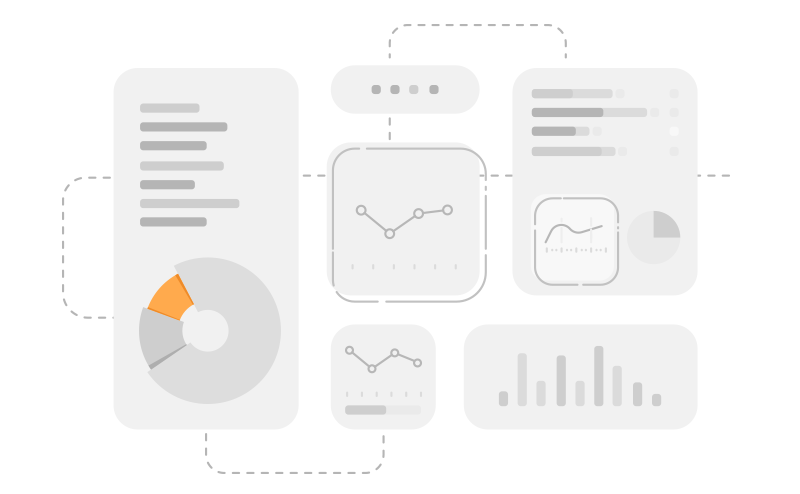In this ever growing world, data is a key essential element which has brought a huge revolution in each and every sector. This is pretty obvious as whether it is a retail sector or manufacturing or a software industry, each and every functionality of the industry is dependent on data. The scope of data is growing rapidly while the elongation of insights by combining data are still on the way.
Insights and Analytics empower organizational growth by many folds. In order to understand the essential elements of business, people and process, organizations need to move towards informational strategies. In order to form informational strategies, organizations need to deploy appropriate human resources who possess an apt understanding in terms of accuracy as well as precision of the amount of information being supplied to them.
Data has been hitting the market at an alarming rate. It is a bidirectional flow which takes places both internally as well as externally. Organizations use these data in order to facilitate their future business growth. Several survey shows that the growth rate of external data source is a bit higher than for internal sources. Organisations collect and monitor data in order to report their success.

Each and every employee of an organization deals with one form of the data or the other at some point of the time. Need lies in channelising these data into useful information. Once transforming to an information, use of the same should be strategically planned in order to bring out the most in it. The various internal as well as external data can be summarized as under :
Internal data sources :
External data sources :
Leveraging internal and external data improves organizational health, employment brand and revenues. Organizations always look out for guidance in order to map out a strategy for better understanding, managing and leveraging the data available to them. Data carries a scope beyond the traditional data. Organizations these days are developing a data culture as well as a data vision.
These huge amounts of data should be managed and structured in a very effective way. In order to facilitate potential opportunities and problems, there arises a need to characterize patterns. These patterns can be the characteristics of the entities. Doing so improves the organizational health by early detection of potential opportunities and problems. The seldom objective of doing so is to keep Organizational health at check by strengthening positive patterns, encouraging positive change and flushing out the negative ones.

Efficient algorithms need to be laid by keeping in mind the cause and effect relationship. A good organizational health metrics gives an insight by indicating the present and anticipate the future status of the organization. Maintaining Organizational health not only requires the knowledge of the past and the present, but also requires a thorough understanding of the structure and dynamics which enables a company to innovate, adapt and maintain the organizational health. This can be achieved by leveraging Big Data and Artificial Intelligence.
Algorithms have been the problem-solving tool since the inception of computer programming. There are several algorithms developed to tackle the large and complex issues. There are a wide variety of algorithms existing in order to select from based on their functionalities. The selection of any algorithm depends on its data ensuring the quality, quantity, feasibility, reliability and accessibility.
Companies do understand the value of data, but they many a times lack the ability to turn it into actionable insights. Organizations need analytics to support their historical knowledge. According to survey, as of now, only around 29% organizations transform analytics data into business actions.
Companies use spreadsheets and databases to maintain their data. Once these data get processed it becomes information. By analyzing that information, insights can be generated. Actionable insights can be spotted in terms of its relevance, novelty, specificity, context and alignment.
In order to convert the raw data into actionable insights, organizations first need to recognize different types of data analytics, measure what matters and finally put the data into context.
Some of the ways to accelerate the data analytics of an organization are :
One of the most important requirement for today’s business is real-time data. Irrespective of the sector company belongs to challenges are increasing significantly from various point of views. And considering the globalization where whole world-economy is inter-connected, real-time data in business becomes even more meaningful.
Let’s consider any sector, for example retail, it’s no more a retail store. It is totally powered by technology, company like amazon, flipkart are one of the leading store which need no introduction. Even, talk about healthcare, education, manufacturing or any sector, under the hood, technology plays a pivotal role. And, it’s important to recognize the significance of real-time insight and analytics in business environment.
An objective of considering data, insight and analytics in business course is to gain a consistent set of metrics to both measure past performance and guide business planning. Perhaps, trends are significantly growing in small business to large enterprise which reflects on their willingness to leverage real-time insight and analytics.
To get the most out of conventional and unconventional data, first one needs to understand data and their patterns to get the meaningful insights. And thereafter, we need to transform data into actionable insights. At Nescode, we add value to your business by collecting, storing and analyzing your data on your terms because we respect your data as we do to ours.